The information contained was compiled from a variety of sources such as the Burbank Historical Society, city records, executive summaries, and interviews with retired officers and employees. It was written for the City of Burbank’s Centennial book and celebration by Retired Lieutenant John Dilibert. Prior to the Centennial request, the department had no perpetual “log” of events or historical diary of each Chief’s tenure. The Burbank Police Department would like to thank those who were able to contribute with a special note to Retired Lieutenant John Dilibert, Retired Executive Assistant Peggy Peters, Retired Detective Harry Strickland and Mrs. Mary Jane Strickland, Retired Sergeant Len Doran, and Retired Detective Frank Turner.
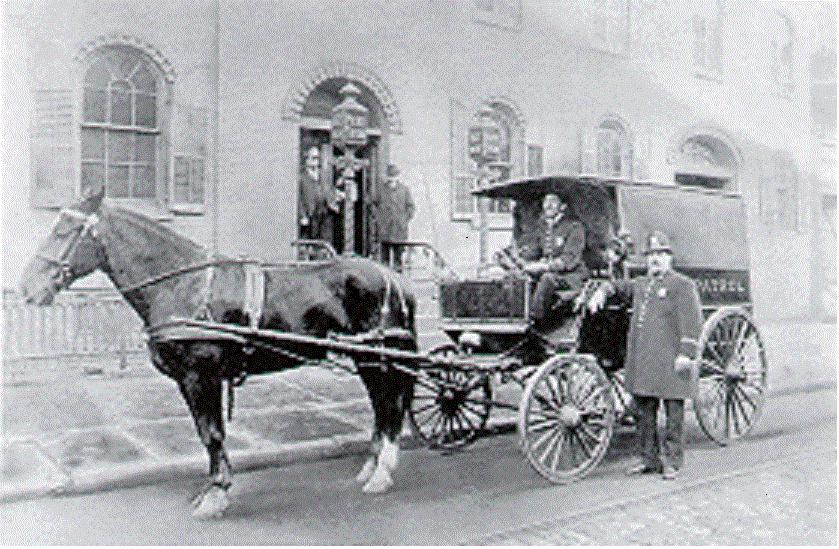
Law enforcement presence in Burbank began in 1911, with the establishment of the City Marshal’s office. It was in existence until 1927, when it became the Burbank Police Department through a change in the city charter. During those first sixteen years, the Marshal’s office was overseen by no less than nine separate Chief Marshals and a select few deputies. During those early years, Burbank law enforcement had its share of tragedies. Marshal Luther Colson and Deputy City Marshal Robert L. Normand were shot to death while patrolling the city. Their deaths in 1914 and 1920, respectively, marked the first time that Burbank police officers were killed in the line of duty. Colson was shot the evening of November 16, 1914, when he was walking on the railroad tracks near what is now Victory Place and Lake Street. Six years later, Normand was killed, when he responded to a call for help to check on three men in a vehicle, with its lights out. The men began shooting as Normand and another deputy approached the car. The other deputy survived despite three bullet wounds, but Normand died at the scene.
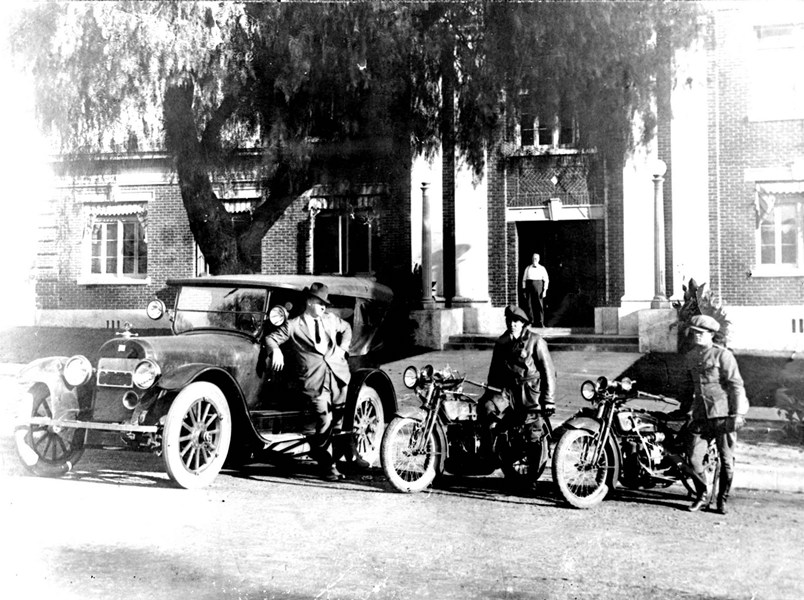
The first true appointment of a Chief of Police occurred on August 15, 1927, when Malcolm G. Lowry took office. Some would credit George Cole as the first Chief of Police, retroactive to his days as a Marshal and being in office when the department changed its name to the Burbank Police Department. Two additional chiefs followed Lowry, until April 15, 1932, when Chief Elmer Adams was selected to head the department. Chief Adams remained in office for nearly twenty years. During his tenure, allegations of organized crime and connections to gangster Mickey Cohen made the newspapers. There were additional stories of a mob hideout on Orange Grove Terrace, and illegal gambling halls that were hidden along the rancho area. In 1951, the California Crime Commission began an investigation into Chief Adams and others within the city. Three days after the commission publicly announced the Chief’s refusal to answer questions about his income and relationship with underworld characters, Adams resigned, followed shortly thereafter by the city manager and a councilman. Without a succession plan in place, the Los Angeles County Sheriff’s Department loaned Hugh C. McDonald to oversee operations. During McDonald’s term in 1952, the Animal Shelter was opened.
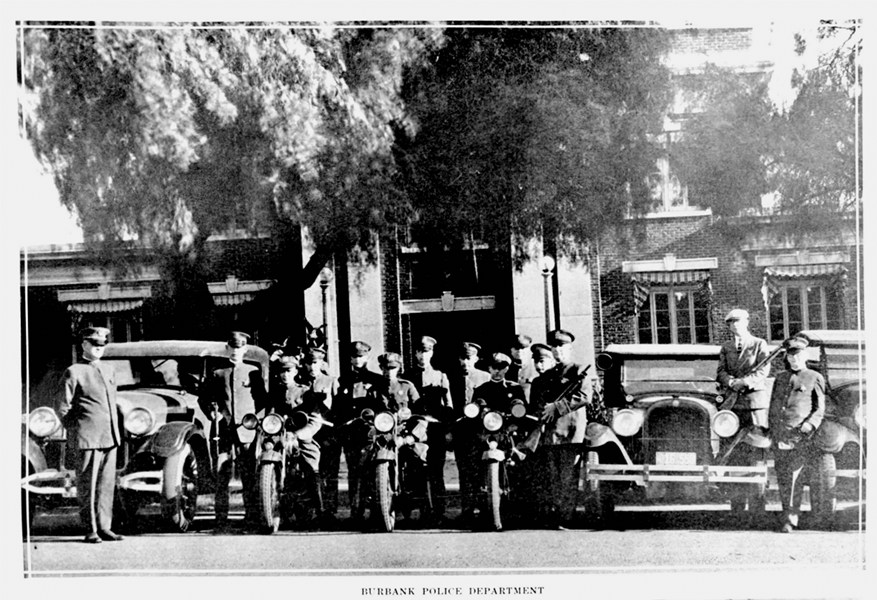
While McDonald fulfilled the chief’s role, the search for a visionary leader to take the department into a new direction was undertaken. On January 1, 1953, Rex R. Andrews took over the office of the Chief of Police. Chief Andrews’ honeymoon period was short-lived when one of the most infamous crimes in the city took place in March 1953. At that time, elderly widow Mabel Monahan was killed in her Burbank home. When the 64-year-old Monahan opened the door to her West Parkside Avenue home, she found herself confronted by a stranger, Barbara Graham (also sometimes referred to as Barbara Wood). Graham, along with a few accomplices, had heard rumors of a Las Vegas gambling fortune hidden in Monahan's house. She was discovered by a gardener, who went to her front door and looked in to find a ransacked home and grisly trail of blood. The gardener immediately called the Burbank Police, who discovered Monahan's badly beaten body, partially inside a hall closet.
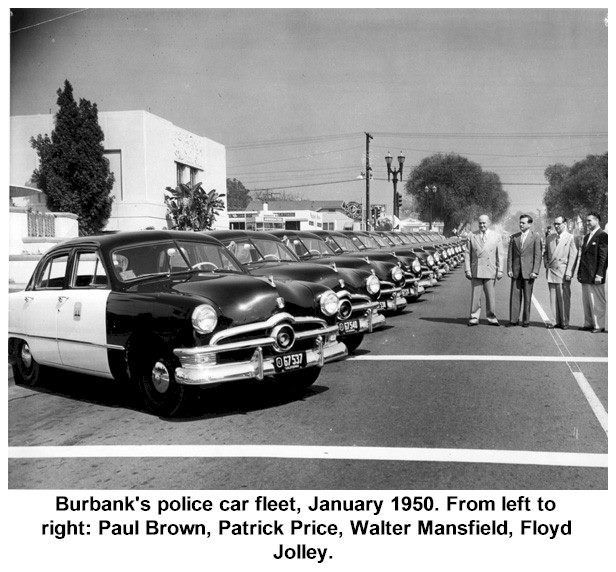
In 1961, the department moved into its new home, located at the corner of Olive and Third. In that same year, the department suffered the loss of two of its motorcycle officers in separate traffic accidents. It was unfortunate and ironic that Officers Richard E. Kunkle and Joseph R. Wilson would lose their lives in the very same type of circumstance that they dutiful tried to prevent. Since that time, traffic safety has been a primary concern of the department and will continue to be so, well into this century. Andrews would eventually retire in the fall of 1971.
Chief Robert C. Loranger took command until February 1976. After his own retirement, he was replaced by James Shaffer, until November 10, 1982, when Shaffer would succumb to cancer. During those twelve years, the police department became involved in the team policing concept, started a police cadet program, provided opportunities for citizen ride-alongs, updated both the vice/narcotics bureau and communications center, established the School Resource Officer program who taught the Impact (now DARE) program to adolescents, used federal grant funds to start the JAB (Joint Attack Burglary) /Neighborhood Watch program, and worked with local ministers to instill a police chaplain program.
In February 1981 while Shaffer was still in command, serial killer Lawrence Bittaker, a Burbank machinist, was convicted of first-degree murder in the 1979 kidnapping and slaying of five teen-aged girls. Bittaker’s trial was the first felony trial in California to allow TV cameras into the courtroom over the objections of the defendant. Today, he is still on Death Row. His partner-in-crime, Roy Norris, was spared the death penalty.
With the passing of Shaffer, Captain Glen Bell was appointed as Chief of Police. Under Bell’s tenure, the department expanded to approximately 150 officers and nearly 80 civilian employees. Efficiencies such as computer report writing, upgraded radio systems, and other technological advancements were undertaken. The Golden Mall policing program was in operation and the beginnings of a helicopter program and gang detail would make an appearance.
When Bell retired in December 1990, he was succeeded by David P. Newsham who, like Bell, had worked his way up through the ranks of the department. Chief Newsham would begin the department’s march to the 21st century with the expansion of the modern day helicopter program. Newsham would add the uniform bike patrol, park ranger program, a weekly television community outreach program, “Street Beat” and the Special Response Team (SRT) to handle high risk situations. Also under Newsham’s direction, the department completed the design and construction of the current police/fire headquarters building, which opened on January 8, 1998, at the corner of Third Street and Orange Grove Avenue. Chief Newsham retired on January 1, 2000.
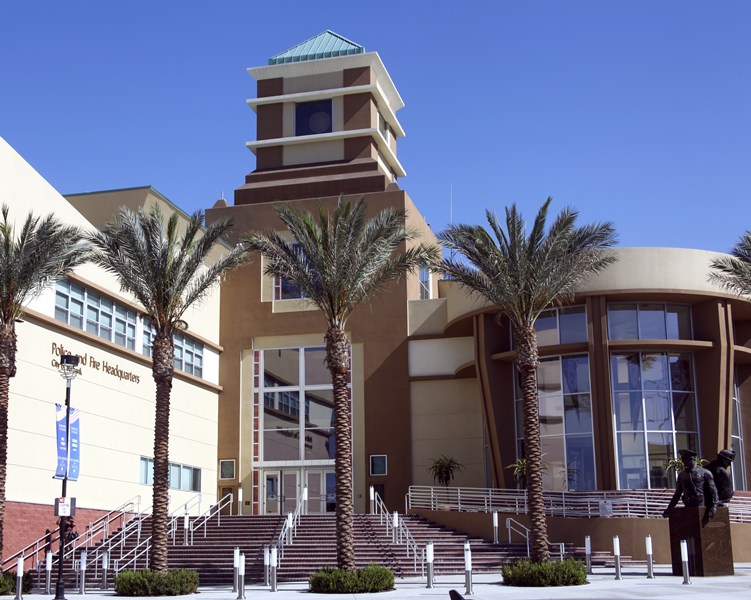
His replacement was Thomas K. Hoefel. Chief Hoefel would serve as the city’s top law enforcement officer until August 1, 2007. Early in Hoefel’s administration, the department would see the ranks expand to an all-time high of 168 officers and over 100 civilian employees. However, on November 15, 2003, the department would suffer its worst day in history, when Officer Matt Pavelka was killed and Officer Greg Campbell was critically wounded, while conducting a drug investigation in the parking lot of the Ramada Inn. It was the first murder of a Burbank police officer, in the line of duty, since 1921. In the ensuing gunfight, one suspect would be killed and the other fled to Mexico. The subsequent murder investigation revealed the two suspects were gang members from a local Sun Valley gang. After an extensive two-week manhunt and through the use of several fellow law enforcement agencies, the suspect, David Garcia, would be captured and returned to the United States. He would eventually plead guilty to the murder of Officer Pavelka and was sentenced to life imprisonment without parole.
In the following eighteen months after the murder, an intricate joint law enforcement effort broke down the gang’s infrastructure. The investigative net was wide and led to the arrest and later resignation of Burbank City Councilmember, Stacy Murphy. The capstone of the effort was the simultaneous service of over fifty arrest and search warrants on several residences within Southern California, all of which were connected to members of the gang. The event, known as “Operation Silent Night” involved over 1000 law enforcement personnel and remains today the largest, single law enforcement tactical event performed in the State of California. It was followed up later on a smaller scale by “Operation Swift Intruder”.
On August 1, 2007, Chief Tim Stehr assumed command of the BPD. During his term, an economic downturn necessitated a decrease in the police workforce. Despite a reduction in staff, proactive policing led to a decline in the crime rate. Stehr was able to enlarge the community outreach effort through the use of “Youth Rewards” and expansion of the police cadet program, where he originally began his career. Chief Stehr retired on December 31, 2009
Upon the retirement of Chief Stehr, the City Manager selected Scott LaChasse, a retired Deputy Chief with the Los Angeles Police Department (L.A.P.D.), to lead the department. LaChasse would be the first Interim Chief appointed to the Burbank post from outside its ranks since Chief Shaffer in 1976. Interim Chief LaChasse brought in a team of experienced police administrators to assist him in enhancing the police department service to the community. Interim Chief LaChasse was appointed the permanent Chief in an official swearing in ceremony on June 4, 2013 and retired in July of 2021.
Chief LaChasse was succeeded by Chief Michael Albanese in 2021. Chief Albanese initially joined the Burbank Police Department as a Police Captain in April, 2010. In July of 2015 he was promoted to Deputy Chief. In July of 2021 he was promoted to Interim Police Chief and in December of 2021, named permanent Chief of Police.
Chief Albanese retired in February of 2025.
On February 26, 2025, Burbank City Manager Justin Hess announced his selection of Rafael Quintero as the next Police Chief for the City of Burbank. Chief Quintero assumed this role after serving with distinction at the Glendale Police Department, where he held various assignment and command roles over 23 years. Chief Quintero brings more than 25 years of experience in law enforcement and public safety leadership. Click here to learn more about Chief Quintero.